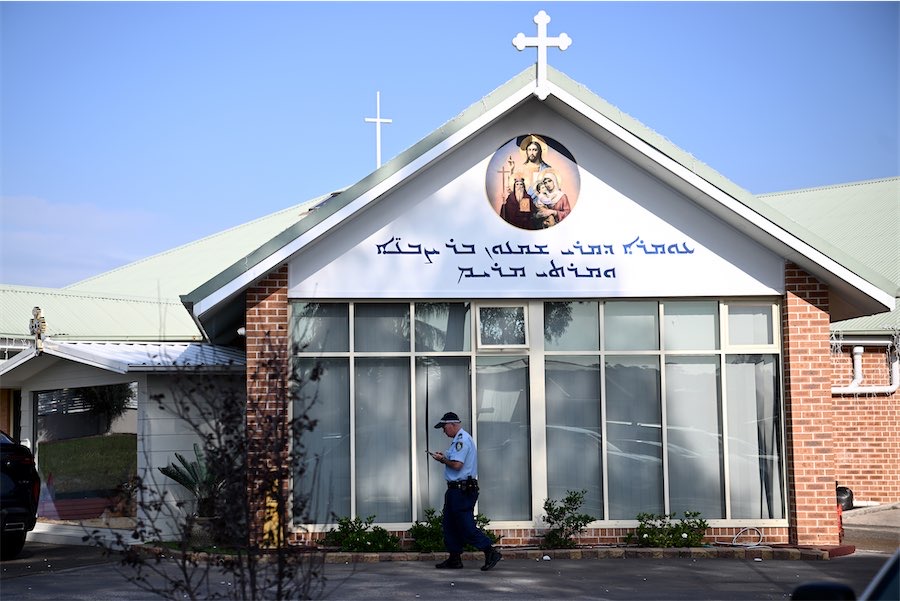WHAT might be Malcolm Turnbull’s worst nightmare, apart from losing the election? Scraping back as a minority government, with Tony Windsor in balance of power.
Just joking.
One can pretty confidently predict Turnbull won’t become a repeat of Julia Gillard. Depending on which poll you prefer, he’s at worst 50-50 (Newpoll, with Labor on a low 35% primary vote – a likely narrow Coalition win), or 53-47% (Fairfax-Ipsos, a good win). The Conversation’s polling expert Adrian Beaumont says Labor probably needs at least 51% of the two-party vote for victory.
On both the polls and bipartisan opinions, the election outcome is currently not seen as being in much doubt. The voters, who for years flagged they wanted Turnbull as prime minister, are not likely to be over him any time soon. Despite a decline in his personal ratings, he has a big reservoir of popularity, although Tony Mitchelmore, from Visibility, which does qualitative research, reports from his focus group work that “the narrative on the prime minister has changed. A lot of swinging voters are saying he doesn’t seem to be doing anything.”
What this election will really be about for Turnbull is the size of his post-election majority. If Turnbull sweeps back to power, it could be an interesting ride. But Labor is hopeful that it can significantly cut into his numbers.
That would put him in serious difficulties, given the conservatives on his backbench. We’ve seen over recent months what they can do. Now they are running a ferocious campaign against the Safe Schools program, with a petition of more than 40 Coalition signatures calling for a parliamentary inquiry. Imagine what they’d try on a re-elected but weakened prime minister.
At this week’s end of the autumn session, Turnbull will have one big legislative achievement – a new Senate voting system, thanks to a deal of mutual convenience with the Greens.
The way is cleared for a July 2 double dissolution, if Turnbull wants to bite the bullet. This has become the general expectation.
Significant hurdles remain but they are not impossible, including bringing the budget forward and getting supply through in time.
The reason for a double dissolution would be to clean out pesky Senate crossbenchers. But just what a new Senate crossbench would look like could actually be a bit of a lottery, according to modelling provided by the Parliamentary Library to a Labor MP this week.
The modelling calculated post-double-dissoution numbers under the new system if people voted as they did in 2013. It found that compared with the present eight non-Green crossbenchers, there could be as many as 11. While for various reasons such modelling has to be taken with a very large grain of salt, the pertinent point is that the outcome of the voting change can’t be precisely predicted, especially in a double dissolution.
While trying to thin out the crossbench would be the real reason for a double dissolution, the main justification that has been put is the Senate’s refusal to pass the government’s industrial relations legislation – bills to reconstitute the Australian Building and Construction Commission and to toughen union governance. A week ago Turnbull suggested if this legislation was passed he would back off.
This may be just a convenient line – Turnbull may be set on a double dissolution regardless. But his political case would be strengthened if he made a serious final effort to herd the crossbench on these issues.
In the next few weeks, they should be invited to meet government negotiators to explore whether agreement could be reached. If nothing came of the attempt, Turnbull would have strongly reinforced his double dissolution argument.
If they caved he would indeed have to retreat. He may not want to take the risk.
Meanwhile, as it moves towards the election, the government’s tax package – to be at the heart of its pitch – shrank further this week, as Treasurer Scott Morrison threw cold water on the prospect of personal income tax cuts, pointing rather to company tax relief.
In just a few months the plan has gone from the prospect of a once-in-a-generation reform with a major tax mix switch – higher GST, income tax cuts to address bracket creep, plus changes to superannuation and negative gearing – to a modest package focused on superannuation, a company tax cut, and higher cigarette tax.
The scaled down package will be cast as promoting “growth and jobs”, but how much voter appeal will it have?
The progressive retreat on personal income tax cuts – though said not to be absolutely off the table – came because the GST trade-off would not have spurred growth, and there is no other revenue available to adequately pay for them.
At the election there will not be the once anticipated clear contrast between a government pledging significant personal tax cuts and an opposition promising spending on education and health programs financed by some tax hikes.
But on another front the present plan sharpens the difference with Labor. Having apparently put aside changes to negative gearing, the government is leaving itself freer to attack the ALP’s radical initiative in that area.
This week’s Fairfax-Ipsos poll showed 42% against limiting concessions for negative gearing; 34% in favour and about one in four people undecided. These figures underline Labor’s risk of this ending up a very difficult issue for it under a sustained government fear campaign.
![]()
Michelle Grattan, Professorial Fellow, University of Canberra
This article was originally published on The Conversation. Read the original article.
Who can be trusted?
In a world of spin and confusion, there’s never been a more important time to support independent journalism in Canberra.
If you trust our work online and want to enforce the power of independent voices, I invite you to make a small contribution.
Every dollar of support is invested back into our journalism to help keep citynews.com.au strong and free.
Thank you,
Ian Meikle, editor





Leave a Reply